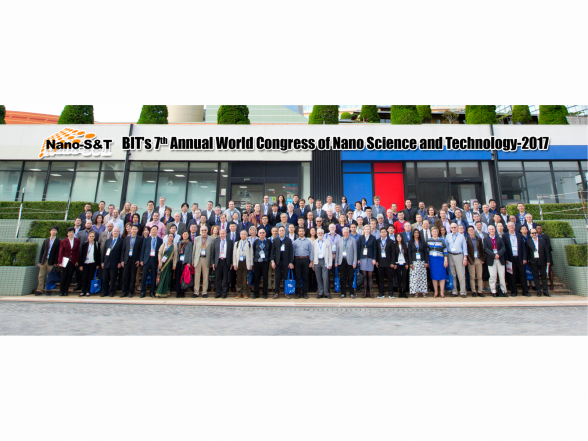Welcome to CAMART2 closing interview #2! This time let us talk about the development of collaboration between the Institute of Solid State Physics, University of Latvia (ISSP UL) and the industry. In this interview, we gathered people directly involved in the foundation and operation of the Materize platform: the director of the ISSP UL and one of the founders of the platform, Andris Anspoks; deputy project manager of CAMART2 and one of the founders of Materize, Andris Ozoliņš; Materize sales director, Olga Bogdanova and Jānis Latvels, who has been involved in nurturing the development of academia and industry collaboration. Launched in 2018, Materize was created with a clear vision: to facilitate and enhance collaboration between scientific research and industry. This platform serves as a vital link, addressing the communication gap between scientists and entrepreneurs and positioning itself as a “one-stop-shop” for tailored industrial services.
Can you share the original vision behind establishing the Materize platform and the specific goals you aimed to achieve?
Before the CAMART2 project, our institute lacked systematic industry engagement. Our vision was to create a "one-stop-shop" for tailored services, establishing the Materize brand to facilitate collaboration. Industry perceptions of scientific institutions as slow and overly academic prompted us to communicate in "business language." KTH and RISE were invited to be partners in the project as considered leaders in collaboration with industry, innovation, and the creation of start-ups. They facilitated the building of solid foundations for cultural change and fostered the dialogue between research and industry. Our goals included enhancing visibility, increasing collaborative projects, ensuring client satisfaction, providing services to the industry, and generating revenue through technology transfer.
To further strengthen the Materize brand, a marketing package was created that includes a visual identity, a website, and visual materials for outreach.
What key challenges did you face while developing the Materize platform?
One of the primary challenges was building an effective sales team and finding the right personnel. Both research and industry have their own unique culture. When establishing Materize, we kept in mind that we needed people with a deep understanding of science and the business environment. We had experienced that representatives of industry in Latvia were hesitant to engage with scientists due to the slow and unpredictable nature of scientific endeavors. Unlike science, where unexpected results are common, the business world demands timely and reliable outcomes.
To address this, Materize prioritized improving communication with industry partners. The team committed to responding within 24 hours and maintained ongoing dialogue to ensure the timely delivery of services. Additionally, we streamlined processes to reduce bureaucratic hurdles, automating documentation to enhance efficiency.
Initially, Materize focused on specific countries to identify potential partners, but this approach proved limiting due to market oversaturation with local service offerings. Under the guidance of CAMART2 supervisors, Materize shifted its strategy to target specific industry verticals aligned with the strategic goals of ISSP UL, particularly those with a solid research base.
As a result of these efforts, Materize has made significant inroads in the Baltic market and is now competitive in the region. The team continues to explore export opportunities, aiming to provide distinctive offerings to attract international customers. Thanks to CAMART2, we could experiment, learn from our mistakes, and refine our vision, focusing on sectors such as the space and defense industries.
Internal communication within ISSP UL also played a crucial role. The team recognized that effective communication is essential for success at every stage of development. When shifting our focus from countries to specific industry verticals, we concentrated on our unique value propositions (UVP) that addressed market needs and were critical for success and further growth. Such an approach was common with other Teaming centers that successfully reached the international industry.
How has the Materize platform transformed how scientific expertise is used in the industry sector in Latvia?
The ’CAMART2 effect’ emerged in a context where there were no comparable projects in Latvia or within a 1,500 km radius. This had a boosting effect, positioning us as a credible partner for the industry. Industry representatives are increasingly engaging in dialogue with scientists to foster mutual benefits driving the development of specific research areas while science gains practical expertise in those fields. The Ministry of Economics of the Republic of Latvia has also acknowledged this potential, with Materize standing out as a notable example.
Thanks to the efforts of ISSP UL and Materize, Latvia’s photonics and smart materials ecosystem has matured and flourished. This ecosystem served as the foundation for the Innovation Fund initiative, designed to support and finance deep tech innovations.
Materize not only markets ISSP UL’s services but also assists its researchers in establishing industry connections. This support is especially crucial when researchers form project consortiums and seek industry partners to strengthen their proposals, including Horizon Europe calls.
Can you provide examples of successful collaborations that have emerged over the years?
Our efforts to attract industrial partnerships have allowed us to show ourselves in new sectors previously unknown to us. Strong partnerships with GroGlass, Sidrabe, Baltic Scientific Instruments, and companies like Lightguide and CeramOptec have opened new collaboration avenues. Our work with Dinex and Naco Technologies has created numerous opportunities. Both companies have contributed to further developing the ISSP UL’s Energy Materials Laboratory, one of the research focuses of which is hydrogen technology – a critical research area in Europe.
Materize has actively participated in events organized by the Federation of Security and Defense Industries of Latvia (FSDI Latvia) and engaged with clients in the military sector, including NATO and defense company Patria.
Our partnerships with Canatu and Thorlabs demonstrate our capacity to fulfill industrial orders and attract international clients. While most of our clients are currently in Latvia and the Baltics, we aim for long-term growth by focusing on niche markets to draw more international business.
Materize’s clients come even from the same building. An ISSP UL’s spin-off, Cellbox Labs, has also benefitted from our services, and our collaboration with them has been very successful.
As the CAMART2 project comes to an end, what are your hopes for the future of Materize?
What we have developed through the CAMART2 project is unique, showcasing the capabilities of the ISSP UL. It has not existed before and serves as a model for others.
Looking ahead, we are optimistic about advancing our innovation through the unique value propositions in microfluidics, thin films, and photonics – our priority research areas at the ISSP UL. For example, prototyping holds significant potential for generating stable income and financially supporting the institute’s laboratories. In the CAMART2 project, one of our goals was to enhance our small-scale production through our open access laboratory. Our closest goal is to establish a microfluidics pilot line and roll-to-roll sputtering facility, building unique value chains enclosing the entire cycle—from research to creating initial prototypes, upscaling, and small-scale production.
As the CAMART2 project concludes, the future is promising, with the potential to develop new technologies and services that meet industry needs. Consistent efforts in creating cutting-edge innovations and fostering strong industry partnerships will ensure continued success. Materize is well-positioned to remain a key player in connecting science and industry for years to come.
Further reading:
Read Innovation Platform’s feature article about Materize on pages 94-97
Innovation Fund at the ISSP UL - the Innovation Fund supports early-stage applied science and commercial research in Latvia, focusing on smart materials, photonics, engineering, biomedicine, and medical technologies. It aims to connect academia with local industries for collaborative projects and engage international experts to oversee promising initiatives.
GroGlass – a leading developer and manufacturer of anti-reflective and high-performance coatings for glass and acrylic. Their innovative solutions cater to a variety of industries, including high-end electronics, static displays, picture framing, museum showcases, and architecture.
Sidrabe - global supplier of flexible solutions for vacuum deposition equipment and scalable coating technologies.
Baltic Scientific Instruments - developing and manufacturing radiation detection and measurement devices and serves various industries globally, including nuclear power, environmental monitoring, healthcare, and security.
Lightguide is a company specializing in advanced optical fibers and laser delivery systems that focuses on innovation, quality, and medical applications.
CeramOptec – a leader in the optical fiber industry for over 35 years, partnering with Ceram Optec SIA to innovate and advance fiber optic technology.
Dinex – provides exhaust, emission, and hydrogen solutions for heavy-duty trucks and industrial applications.
Naco Technologies – specializes in developing and delivering specialized nano-coatings and new materials for hydrogen system producers.
Patria – an international defense and technology company with over a century of experience.
Canatu – a developer of advanced carbon nanomaterials specializing in cutting-edge carbon nanotubes that enable transformative products across various industries.
Thorlabs - designs and manufactures fiber optics, lasers, optical instrumentation, optomechanics, photonics, and vibration isolation.
Cellbox Labs – an ISSP UL’s spin-off company that develops a vascularized organ-on-a-chip platform that enhances drug discovery by combining hardware and software to allow for flexible experimental designs and reduce hands-on time.



